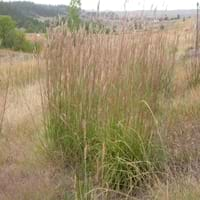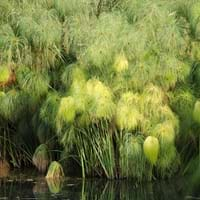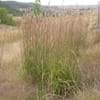Life Span
Perennial
Perennial
Origin
North America, United States, Northeastern United States, Mid-Atlantic United States, Southeastern United States, North-Central United States, Central United States, South-Central United States, Southwestern United States, Texas, Canada, Mexico
Africa
Types
Not Available
C. papyrus, C. papyrus 'Nanus
Number of Varieties
Not Available
Habitat
meadows, Prairies, Riverbanks, Roadsides, Woods
Lakes, Shores of rivers or lakes, sluggish streams and rivers, Swamps
USDA Hardiness Zone
2-7
7-11
Sunset Zone
1a, 1b, 2a, 2b, 3a, 3b, 4, 5, 6, 7, 8, 9, 14, 15, 16, 17, 18, 19, 20, 21, 22, 23, 24
H1, H2, 16, 17, 23, 24
Habit
Clump-Forming
Clump-Forming
Flower Color Modifier
Bicolor
Bicolor
Fruit Color
Not Available
Brown
Leaf Color in Spring
Green
Green, Light Green
Leaf Color in Summer
Light Green
Green, Light Green
Leaf Color in Fall
Blue Green, Burgundy, Bronze
Green, Light Green
Leaf Color in Winter
Tan, Sandy Brown
Green, Light Green
Leaf Shape
Grass like
Grass like
Plant Season
Summer, Fall, Winter
Spring, Summer, Fall, Winter
Sunlight
Full Sun, Partial Sun
Full Sun, Partial Sun
Type of Soil
Loam, Sand
Clay, Loam, Sand
The pH of Soil
Neutral, Alkaline
Neutral
Soil Drainage
Well drained
Poorly Drained
Bloom Time
Late Summer, Early Fall, Fall
Indeterminate
Tolerances
Not Available
Drought
Where to Plant?
Container, Ground, Pot
Container, Ground, Pot
How to Plant?
Seedlings
Stem Planting
Plant Maintenance
Medium
Medium
Watering Requirements
Average Water Needs, Do Not over Water, Medium
Average Water Needs, Keep ground moist, Requires a lot of watering
In Summer
Lots of watering
Lots of watering
In Spring
Moderate
Moderate
In Winter
Average Water
Average Water
Soil pH
Neutral, Alkaline
Neutral
Soil Type
Loam, Sand
Clay, Loam, Sand
Soil Drainage Capacity
Well drained
Poorly Drained
Sun Exposure
Full Sun, Partial Sun
Full Sun, Partial Sun
Pruning
Remove damaged leaves, Remove dead branches, Remove dead leaves, Remove dead or diseased plant parts
Remove damaged leaves, Remove dead branches, Remove dead leaves
Fertilizers
All-Purpose Liquid Fertilizer
All-Purpose Liquid Fertilizer
Pests and Diseases
Red blotch
fungus
Plant Tolerance
Not Found
Drought
Flower Petal Number
Single
Single
Foliage Texture
Medium
Not Available
Foliage Sheen
Matte
Glossy
Attracts
Birds, Butterflies
Flying insects, Hummingbirds
Allergy
Not Available
Not Available
Aesthetic Uses
Ground Cover, Landscape Designing, Showy Purposes
Showy Purposes
Beauty Benefits
Not Available
Not Available
Edible Uses
Insignificant
Insignificant
Environmental Uses
Air purification, Food for animals, Prevent Soil Erosion
Air purification
Medicinal Uses
Not Available
Cancer, Heals minor burns, Wounds
Part of Plant Used
Leaves, Stem
Stem
Other Uses
Decoration Purposes, Food for animals
Constructing Boats, Used as fuel, Used in paper industry
Used As Indoor Plant
Insignificant
Yes
Used As Outdoor Plant
Yes
Yes
Garden Design
Cutflower, Dried Flower/Everlasting, Mixed Border, Screening / Wind Break, Wildflower
Bog Garden, Container, Feature Plant, Houseplant, Mixed Border, Water Gardens
Botanical Name
ANDROPOGON gerardii
CYPERUS 'Wild Spike'
Common Name
Big Bluestem, Turkey Foot
Papyrus, Wild Spike Cyperus
In Hindi
Big Bluestem grass
पेपिरस संयंत्र
In German
Große Bartgras
ägyptischen Papyrus-Pflanze
In French
Barbon de Gérard herbe
Papyrus égyptien
In Spanish
hierba andropogon grande
Papiro egipcio
In Greek
Big BLUESTEM γρασίδι
αιγυπτιακό πάπυρο
In Portuguese
Vetiver grande grama
Papiro egípcio
In Polish
Big Bluestem trawa
Papiro egipcio
In Latin
Big bluestem herba
CHARTA
Phylum
Magnoliophyta
Magnoliophyta
Class
Lillosida
Agaricomycetes
Family
Poaceae
Cyperaceae
Clade
Angiosperms, Commelinids, Monocots
Angiosperms, Commelinids, Monocots
Tribe
Not Available
Cariceae
Subfamily
Not Available
Cyperoideae
Number of Species
Not Available
Not Available
Season and Care of Big Bluestem and Egyptian Papyrus
Season and care of Big Bluestem and Egyptian Papyrus is important to know. While considering everything about Big Bluestem and Egyptian Papyrus Care, growing season is an essential factor. Big Bluestem season is Summer, Fall and Winter and Egyptian Papyrus season is Summer, Fall and Winter. The type of soil for Big Bluestem is Loam, Sand and for Egyptian Papyrus is Clay, Loam, Sand while the PH of soil for Big Bluestem is Neutral, Alkaline and for Egyptian Papyrus is Neutral.
Big Bluestem and Egyptian Papyrus Physical Information
Big Bluestem and Egyptian Papyrus physical information is very important for comparison. Big Bluestem height is 38.10 cm and width 152.40 cm whereas Egyptian Papyrus height is 60.00 cm and width 60.00 cm. The color specification of Big Bluestem and Egyptian Papyrus are as follows:
Big Bluestem flower color: Purple
Big Bluestem leaf color: Green
Egyptian Papyrus flower color: Tan
- Egyptian Papyrus leaf color: Green and Light Green
Care of Big Bluestem and Egyptian Papyrus
Care of Big Bluestem and Egyptian Papyrus include pruning, fertilizers, watering etc. Big Bluestem pruning is done Remove damaged leaves, Remove dead branches, Remove dead leaves and Remove dead or diseased plant parts and Egyptian Papyrus pruning is done Remove damaged leaves, Remove dead branches and Remove dead leaves. In summer Big Bluestem needs Lots of watering and in winter, it needs Average Water. Whereas, in summer Egyptian Papyrus needs Lots of watering and in winter, it needs Average Water.





